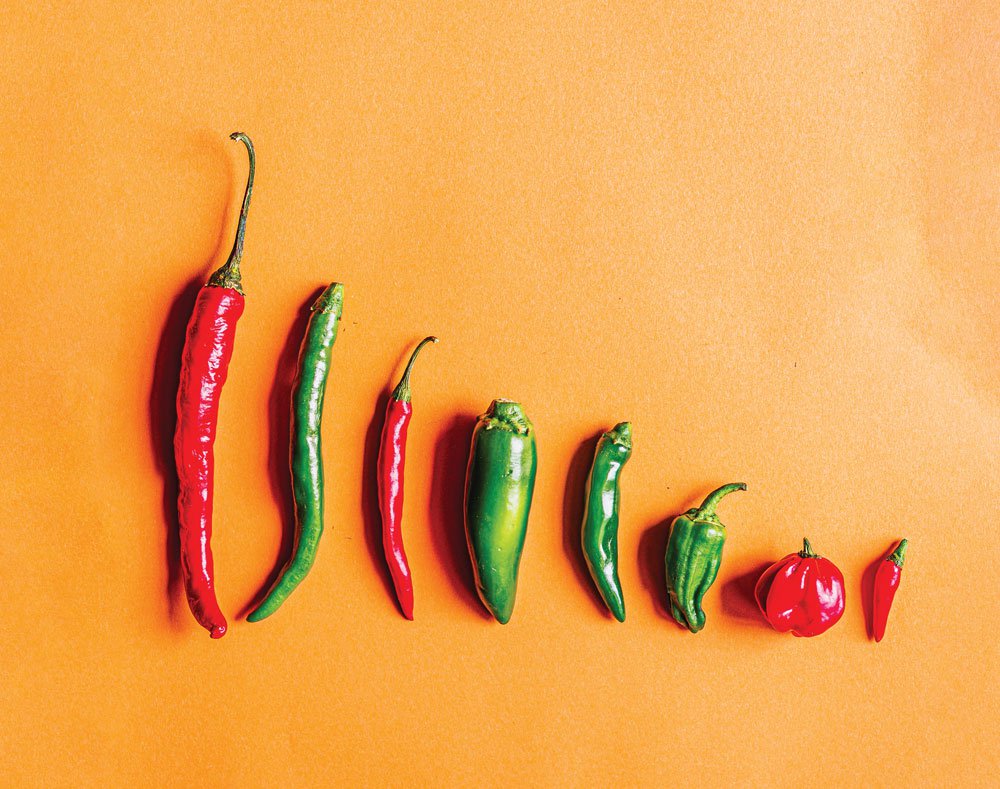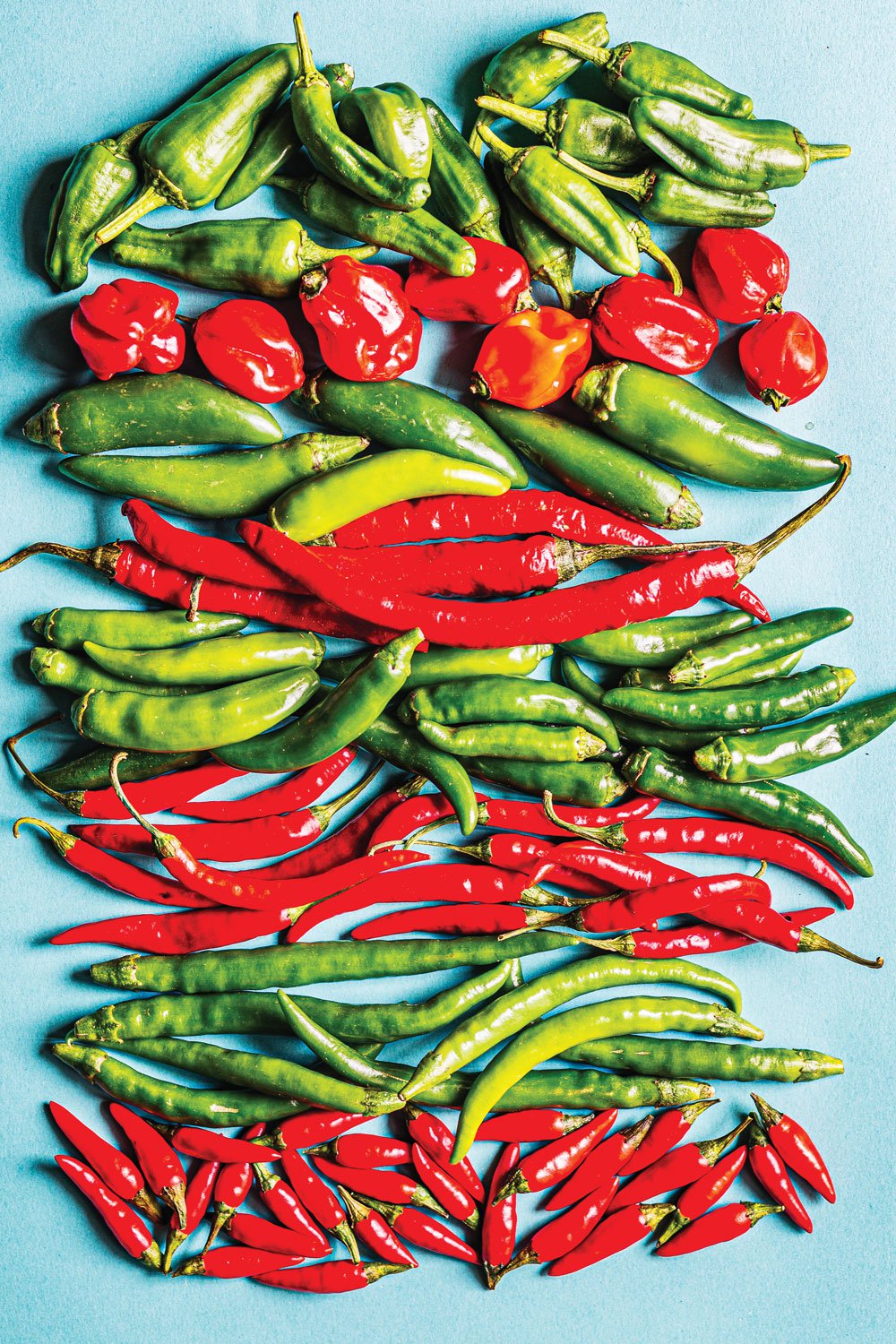Chillies are part of the capsicum family of flowering plants. Their heat comes from a compound known as capsaicin, which triggers a burning sensation on the tongue when consumed. The intensity of this heat or pungency is measured using the Scoville scale, which was invented in 1912. It tests the heat of a chilli by diluting the capsaicin in a sugar-water solution. The more it needs to be diluted to get rid of the ‘burn’, the higher its Scoville Heat Unit (SHU) rating climbs.
Here are our top tips when looking for your spice kick:
Shopping
When shopping for fresh chillies, choose ones that are firm with shiny skin. Avoid chillies that appear discoloured, wrinkled and soft. Similarly, when looking for dried chillies, steer clear of ones that look like they’ll crumble with the lightest touch. They should still feel fleshy even if they aren’t as pliant as their fresh counterparts. As they dry, green and red chillies change colour to black and dark red respectively.
Flavour
As a chilli matures, the complexity of its flavour evolves because its natural sugars and acids develop. Fresh green chillies tend to have earthy, grassy notes while red chillies carry fruitier, citrusy notes. Fresh chillies may seem to carry more heat but that’s only due to the water present in them which distributes the heat across the mouth faster. Dried chillies in general have more complex flavours as they were harvested when fully ripe.
How to use
Remove the rib and white pith if you want to decrease a chilli’s potency. Roasting fresh chillies is an easy way to heighten their flavour. Toasting dried chillies will make the flavours emerge. If you can’t find dried whole chillies, use the powdered version. In general, ½ tsp of chilli powder equals one chopped fresh chilli.

Different types of chillies:
Long red cayenne
Colour: crimson red.
Flavour: hot and spicy, so a little goes a long way.
Cook with it: this versatile chilli dries well, so you can make your own cayenne chilli powder, or use it fresh in sauces, curries and salsas.
Green Thai
Colour: green chilli pepper.
Flavour: earthy, grassy notes with a pungent heat.
Cook with it: this chilli is best used to flavour curries, blitzed into hot sauces, infuse oils or stir-fries.
Padron
Colour: yellow to bright green.
Flavour: zingy bite with a nutty aftertaste.
Cook with it: grill or blister padron chilli peppers in a griddle pan over a medium-high heat with olive oil then sprinkle with flaky salt for an immensely satisfying appetiser (see recipe here).
Habanero
Colour: ranging from bright orange to red as they mature.
Flavour: fruity notes with a touch of smokiness.
Cook with it: this tiny chilli carries an intense heat so a little goes a long way. Add it to salsa, or whip up a hot sauce to drizzle over grilled meats.
Cayenne
Colour: usually bright red, but can also be green.
Flavour: fiery with smoky notes.
Cook with it: this versatile chilli can be used in spicy marinades, curries, sauces and soups.
Jalapeño
Colour: dark green to red when
fresh evolving to a deep reddish brown when mature.
Flavour: grassy with acidic notes.
Cook with it: you’re probably familiar with pickled jalapeños but these can also be chopped up and added to guacamole, grilled or stuffed (check out the recipe for jalapeño chilli poppers here).
Serrano
Colour: varies from yellow, orange, red or green depending on its maturity.
Flavour: earthy, grassy taste with a delayed heat reaction.
Cook with it: use raw serrano chillies to add a kick to guacamole, salsa and salads. These chillies can also be pickled.
Bird’s eye
Colour: green and red, with the latter having a higher heat rating.
Flavour: potent heat with a fruity, peppery flavour.
Cook with it: this chilli is popular in Southeast-Asian cuisine to add heat to curries, stir-fries and sauces

